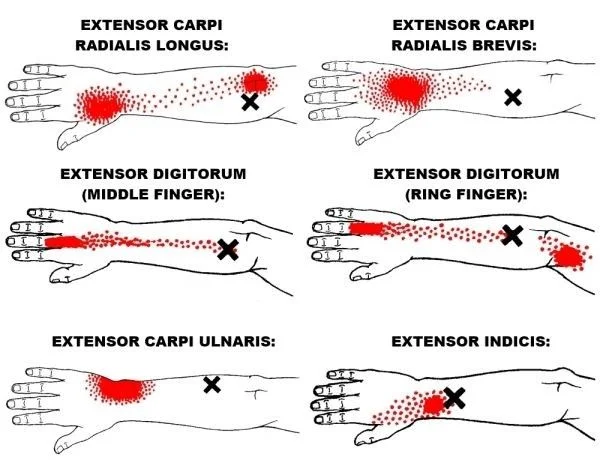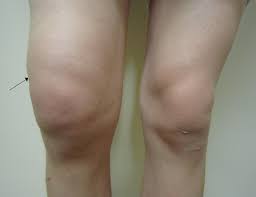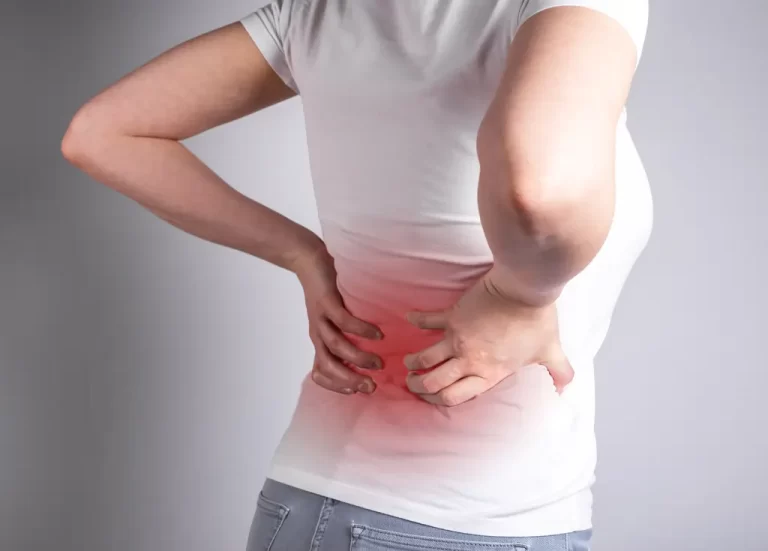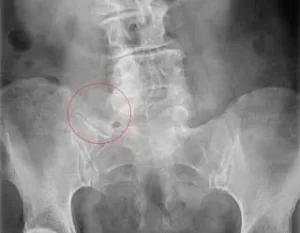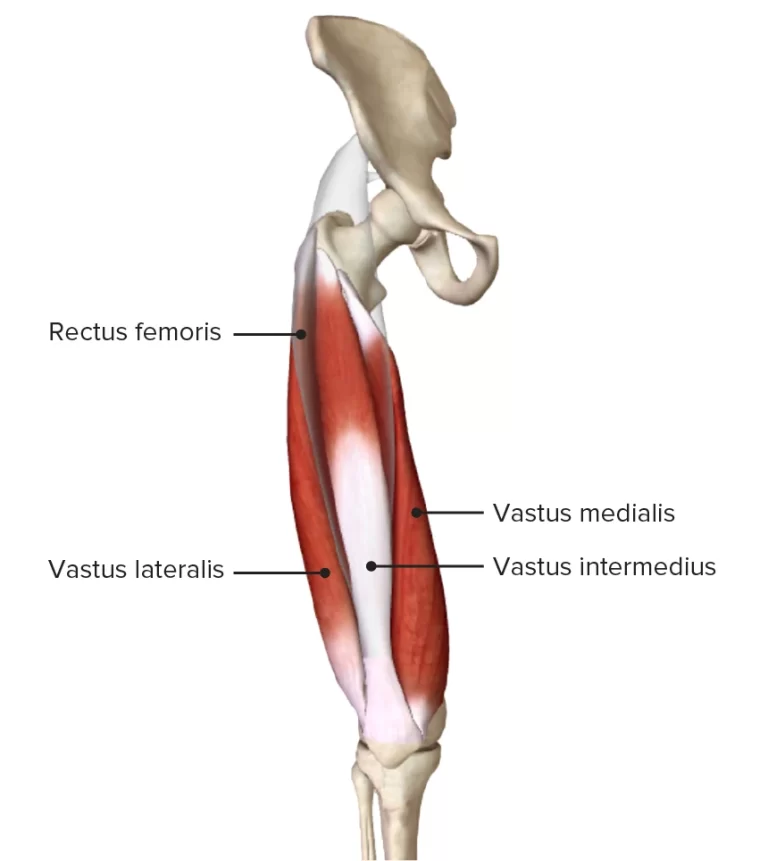Trigger Points in Forearm Muscles
Trigger points in forearm muscles are sensitive knots or tight bands that develop within the muscle fibers, often as a result of overuse, repetitive motions, or poor ergonomics. These points can cause localized pain and discomfort, as well as referred pain in areas such as the wrist, hand, or elbow.
Common in individuals who engage in activities like typing, gripping, or lifting, forearm trigger points can limit mobility and strength, making everyday tasks challenging.
Recognizing and treating these trigger points early is crucial to alleviating pain and restoring optimal muscle function.
What are the trigger points?
Myofascial trigger points, another name for trigger points, are very irritable areas found in skeletal muscular bands that are tense. They can result in both local and transferred discomfort and are frequently linked to palpable nodules.
Trigger point characteristics include:
Hyperirritability: They feel pressure very easily.
Palpable Nodules: These frequently resemble tiny, constricted knots inside the muscle.
Referred Pain: When pressure is applied to a trigger point, pain may radiate to other parts of the body, frequently distant from the trigger point.
Local Twitch Response: When pressure is applied to a trigger point, the muscle fibers may twitch visibly or tactilely.
What are the forearm trigger points?
Forearm trigger points are frequently the source of wrist, hand, and even neck and shoulder pain and discomfort. The following are some typical forearm flexor trigger points:
The muscle known as the Flexor Carpi Radialis (FCR) is situated on the forearm’s thumb side. The thumb and wrist may hurt from these trigger points.
The flexor carpi ulnaris (FCU) muscle stands out on the little finger side of the forearm. This area has trigger points that can hurt the pinky finger and wrist.
Pronator Teres: This muscle might be hard to find because it lies deep in the forearm. This area contains trigger points that might result in hand, wrist, and forearm discomfort.
The brachioradialis muscle is situated on the forearm’s thumb side. This area contains trigger points that might result in wrist, elbow, and forearm discomfort.
The following are a few typical forearm extensor trigger points:
The extensor carpi radialis longus and brevis muscles can be found on the thumb region portion of the forearm. The thumb and wrist may hurt from these trigger points.
The extensor carpi ulnaris muscle is particularly prominent in the thumb portion of the forearm. This area has trigger points that can hurt the pinky finger and wrist.
The extensor digitorum. Finger discomfort may result from these trigger sites.
The thumb side of the forearm contains the extensor indicis muscle. The index finger may hurt from these trigger sites.
The extensor digiti minimi muscle. The pinky finger may hurt from these trigger sites.
Causes and Symptoms:
The Flexor Trigger Points on the Wrist That Lead to Wrist Pain:
The muscles on the inside of the forearm are called wrist flexors. These muscles go down the inside of the forearm to connect to the wrist bones after attaching to the bottom part of the upper arm bone. The wrist flexes or curls when these muscles are contracted.
The Flexor Carpi Ulnaris and Flexor Carpi Radialis are part of the Wrist Flexor muscle group.
Symptoms of Wrist Extensor Trigger Point:
Individuals who have activated trigger points in their wrist flexors report discomfort in their thumb, fingers, and inner wrist. Additionally, they will find it extremely difficult to use scissors.
The Trigger Points for the Wrist Extensors That Produce Wrist Pain:
The muscles on the rear of the forearm are called the wrist extensors. Once they have attached to the humerus, the lowest portion of the upper arm bone, they proceed down the forearm to join the wrist bones. When the wrist is flexed backward, these muscles contract (much like when you use the throttle on a motorbike).
The Extensor Carpi Radialis, Extensor Carpi Ulnaris, and Extensor Digitorum muscles make up the Wrist Extensor muscle group.
Symptoms of Wrist Extensor Trigger Point:
Patients will experience pain on the back of their wrist and hand if they have activated wrist extensor trigger points. Additionally, they could have pain on the lateral epicondyle or outside of the elbow joint. Additionally, their diminished grip strength will make it difficult for them to hold objects.
These muscles are frequently overworked and create trigger points when engaging in woodworking, tennis, weed-trimming, and frisbee tossing.
Treatment of Trigger Points in Forearm Muscles
Treatment for trigger points:
Trigger points can be treated in a variety of methods, such as:
- Massage: it helps to relieve pain.
- Stretching: Increasing flexibility and lowering discomfort can be achieved by stretching the afflicted muscle.
- Heat therapy: By applying heat to the affected area, pain can be lessened and muscles relaxed.
- Ice treatment: Putting ice on the area that is affected might assist in lessening discomfort and inflammation.
- Acetaminophen and ibuprofen are two examples of over-the-counter pain relievers that can help lessen discomfort.
Physical Therapy:
Trigger point therapy: Applying pressure to the trigger point relieves tension and lessens discomfort in trigger point treatment.
The therapist can apply pressure with a foam roller, a tennis ball, or their fingertips.
Massage: By calming muscles and boosting blood flow to the region, massage can help lessen discomfort and inflammation.
Stretching: Increasing flexibility and lowering tension in the forearm muscles can be achieved by stretching them.
Strengthening exercises: Exercises for strengthening the forearm muscles can assist increase stability and lower the likelihood of trigger points in the future.
Ultrasound therapy: Ultrasound therapy can enhance blood flow to the region and aid in scar tissue breakdown.
Electrical stimulation: Pain and inflammation can be lessened with electrical stimulation.
Dry needling: To relieve tension and lessen discomfort, dry needling entails putting tiny needles into the trigger point.
Exercises :
Exercises for the Elbows
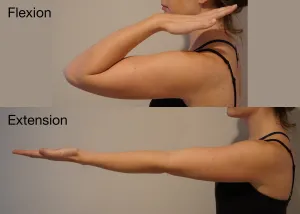
Flexing the Elbow:
Reaching across the elbow to draw that forearm further towards your torso is known as elbow flexion.
Return your grasping hand slowly to its initial position.
Repeat 2–3 sets of 10–15 times.
Extension of the Elbow:
When your forearm straightens at the elbow and descends towards your lower body it’s called elbow extension.
Return to the beginning posture by slowly straightening your arm.
Repeat 2–3 sets of 10–15 times.
Rotation of the Forearm:
Stand with the tip of your elbow palm elevated over a table.
Make sure your palm is facing down by rotating your forearm.
Return your forearm to its initial position by rotating it.
Repeat 2–3 sets of 10–15 times.
Wrist Exercises
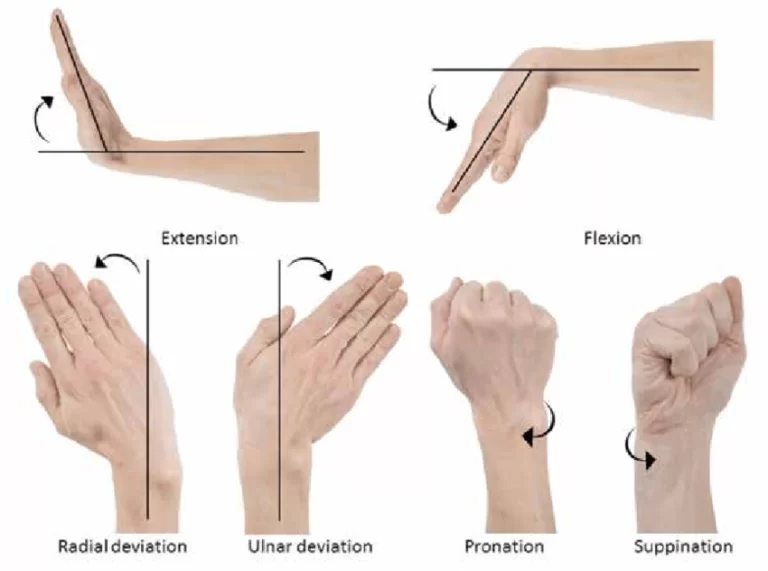
Flexing the Wrist:
Through your palm up, sit down at a table.
Your wrist should be bent against your forearm as your fingers are straight up.
then gradually return to the starting position.
Repeat 2–3 sets of 10–15 times.
Extension of the Wrist:
Whenever you sit, put your forearm palm downward onto a table.
Your wrist should be bent towards your forearm as your fingers are straight.
then gradually return to the starting position.
Repeat 2–3 sets of 10–15 times.
Radial Deviation of the Wrist:
position your forearm palm downward on a table while you’re seated.
Carelessly proceed from the wrist towards your thumb’s side.
Gradually bring to the starting position.
Repeat 2–3 sets of 10–15 times.
Ulnar Deviation at the Wrist:
seated on a table with the palm of your right forearm facing down.
Approach your pinky side with your wrist.
Eventually, put your wrist back in the position from where it came.
Repeat 2–3 sets of 10–15 times.
Stretching:
Stretch for the Triceps:
Place your back against a wall.
By lifting your arm over your head, you may strengthen your elbow and extend your hand down your back.
Keep running your fingers down your back softly until your triceps begin to lengthen.
After 30 seconds of holding, let go.
Continue on the opposite side.
Stretch for the Biceps:

Face a wall.
The ideal position for your hands is shoulder-spread apart and shoulder-high on the wall.
Maintaining a straight back, lean forward until your biceps start to stretch.
After 30 seconds of holding, let go.
Stretches for the wrists:
Flexor Stretch for the Wrist:

Hold your arm out in alignment with you, palm-side down.
Apply a little pressure with your other hand as you gently bend your wrist back towards your forearm.
After 30 seconds of holding, let go.
Keep doing this with your palm up, bending your wrist towards your forearm this time.
Stretching the Wrist Extensor:
Make certain that your arm is pointed with your palm up.
Apply a little pressure with your other hand as you bend your wrist towards your forearm.
After 30 seconds of holding, let go.
Strengthening exercises
Bicep curls:
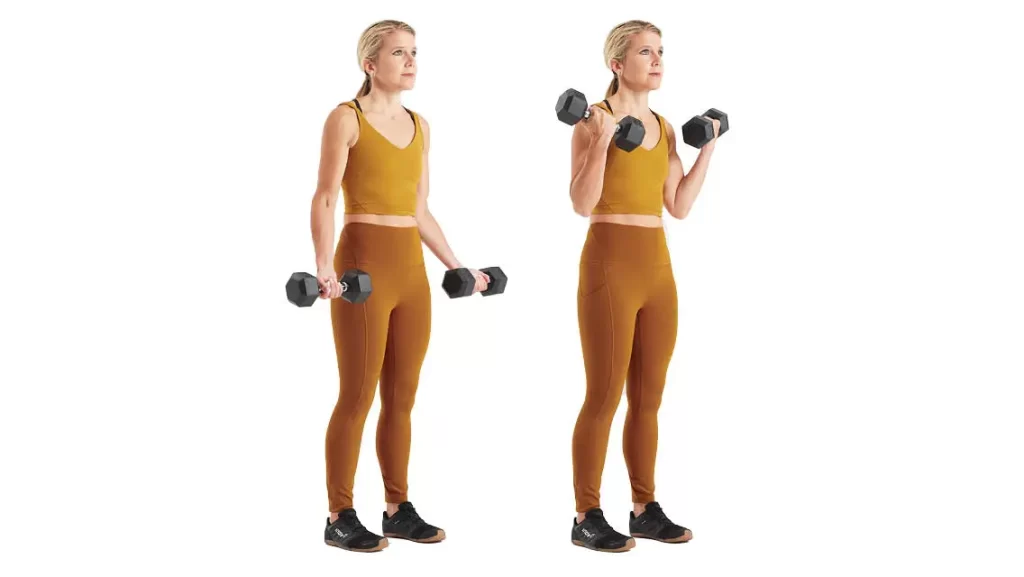
Hold a little weight in each hand, palms facing up, while standing or sitting.
Folding your elbows is going to bring the heavy objects nearer to your shoulders.
Repeat 2–3 sets 10–12 times.
Triceps Extensions:
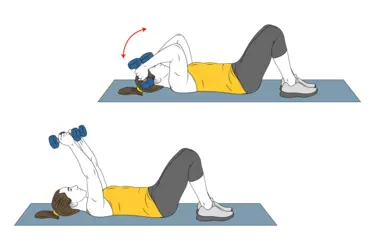
Either sitting, supine, or standing with your elbows bent and a little weight behind your head.
Lower the weight gradually back to the beginning position after extending your arms straight overhead.
Repeat 2–3 sets 10–12 times.
In your palm, grip a rolled-up towel, sock, or tennis ball, and squeeze your fist. Using your fingers, compress the ball or towel tightly for ten seconds. Repeat nine times.
Towel twist:
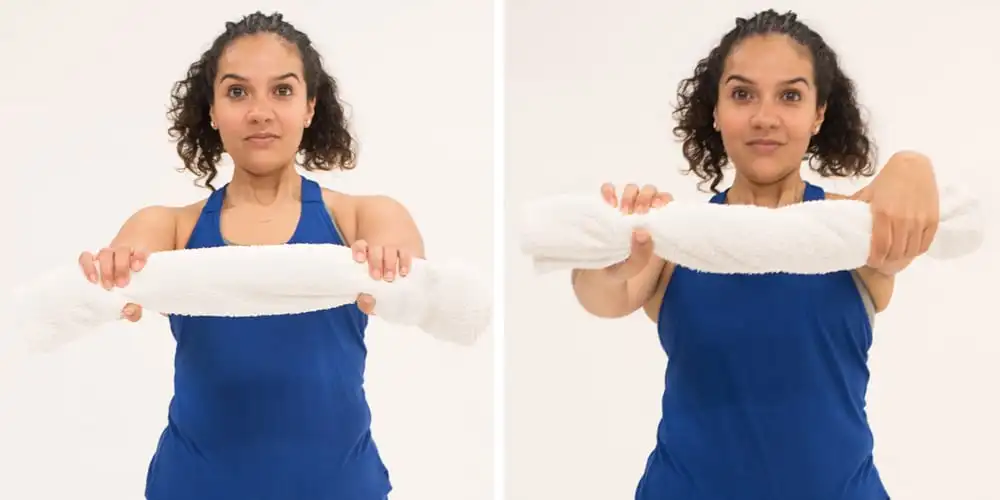
This is a wrist and forearm grip-strengthening exercise. Rinse out a towel by twisting it as much as you can with both hands. You twist the towel in different directions.
Conclusion
Brachioradialis muscles aid in movement duties, hence the forearms have a casual association with the hands and wrist. A person’s forearms provide support, and their hands and wrists aid in gripping whatever they carry.
The formation of trigger points that impair hand and wrist motion might result from injuries or common causes of pain-like feelings on the forearm. Up to that moment, it may cause a burning feeling or weaken hand grips.
People who experience this may find it difficult to grip objects and have numbness in their hands and wrists. Fortunately, there are pain experts who can assist in controlling trigger points along the afflicted muscle and restore mobility and grip function to the hands and wrist by using a variety of procedures. Without wrist and hand discomfort, people who integrate these therapies into their regular routines might start to regain a sense of belonging.
FAQs
What is the process for releasing muscle trigger points?
We can use either our hands or a tennis ball to apply pressure to the muscles. You have the option of having someone else feel for the trigger points or doing it yourself.
Are trigger points permanent?
It takes time for trigger points to disappear. They may regress somewhat to a stage where they no longer refer pain until a therapist applies pressure, but they will still be present if they are rested or treated. They will refer pain again if it worsens or develops more.
How can trigger points be effectively treated?
A popular and usually safe treatment for myofascial pain brought on by trigger points is trigger point injections. The injection can relieve pain for at least a month, even if the operation may cause some short-term discomfort.
Is it harmful to stretch for trigger points?
Muscle fiber damage and aggravated trigger points can result from overstretching. Engage in stress-relieving and relaxing activities daily. having a warm bath. To promote greater muscular relaxation, add Epsom salts to the bath water.
Why are trigger points present?
Trigger points may develop as a result of a muscular injury or chronic tension. An area in or close to a strained muscle, for example, might develop into a trigger point. Poor posture and repetitive actions might also raise the risk. Anxiety and tension.
References
- PainWhisperer.com | Trigger Point Therapy for Wrist and Hand Pain. (n.d.). Pw. https://www.painwhisperer.com/trigger-point-wrist-hand-pain
- Graeme. (2022, July 10). Trigger points and tennis elbow: cause, diagnosis, and treatment. Trigger Points and Tennis Elbow: Cause, Diagnosis and Treatment. https://www.drgraeme.com/articles/2021/07/trigger-points-and-tennis-elbow-cause-diagnosis-and-treatment
- Nat, T. (2018, February 19). Trigger Point Therapy – Treating the Wrist Flexor Muscles. Niel Asher Education. https://nielasher.com/en-in/blogs/video-blog/61769541-trigger-point-therapy-treating-the-wrist-flexor-muscles?srsltid=AfmBOopfsYbluJEV-fW8wgbyibDmAh2Jj4FmHeibaOTjCdkKjut5eM-4
- Jimenez, A. (2022, September 30). Trigger Point Affecting The Hands & Wrist. Integrative Wellness Podcast | El Paso, Texas. https://healthvoice360.com/trigger-points-hands-wrist/
- Cadman, B. (2023, March 17). Eight exercises for tennis elbow. https://www.medicalnewstoday.com/articles/322746#exercises

